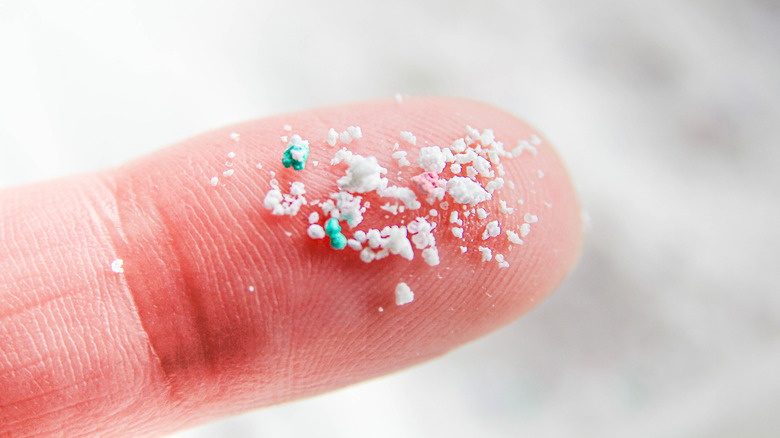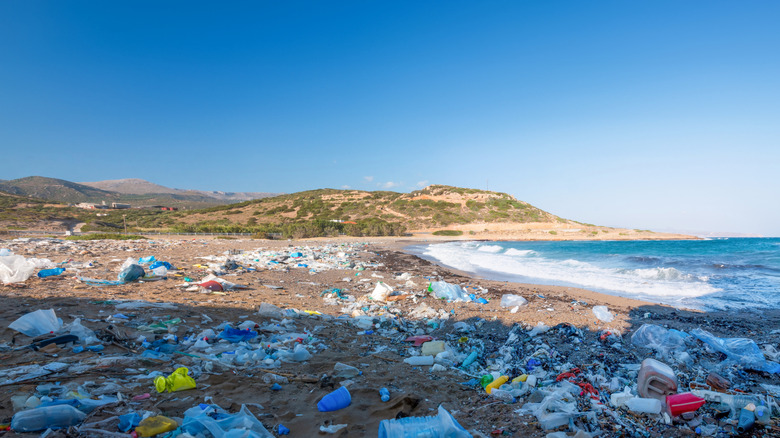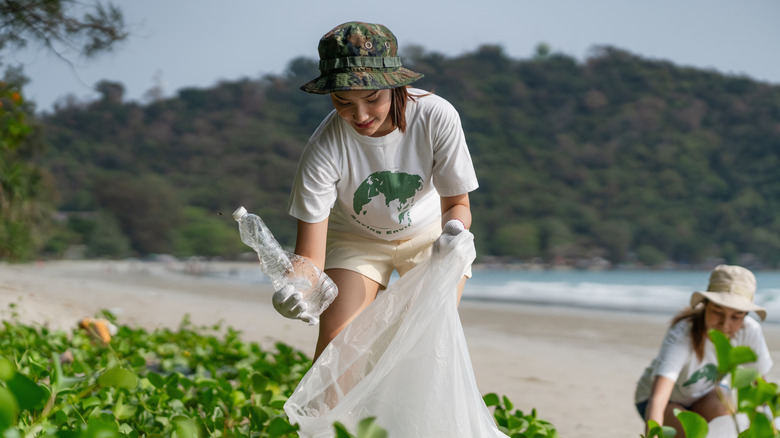We Might Be Able To Say Goodbye To Microplastics In Water With One Simple Trick
We may receive a commission on purchases made from links.
Microplastics have quietly become one of the most pressing environmental challenges of our time. These microscopic plastic particles — defined by the Steering Committee of the National Oceanic and Atmospheric Administration Marine Debris Program as fragments smaller than 5 millimeters — are simply everywhere: in the food we eat, the air we breathe, and increasingly, in the water we drink. The material's downstream effects are part of the reason why plastic bags are so bad for the environment and even affect the ocean food chain.
That's what makes the findings of a new study by researchers at Guangzhou Medical University and Jinan University in China so compelling. Published in Environmental Science & Technology Letters, the team discovered a perhaps counterintuitively simple method that effectively removes a significant amount of microplastics from drinking water — boiling it. The researchers added microplastics and nanoplastics (even smaller microplastics less than one micron in size) to tap water before boiling and filtering it. They found that the remaining water was, in some cases, up to 90% free of the plastics they put in to begin with.
The key to the process lies in the water's precipitate leftovers — the solids that remain after a liquid solution is processed. In this case, the increased temperature of the boiling water resulted in the formation of calcium carbonate, more commonly known as limescale, on the microplastics' surface. This process binds the plastics to the limescale, which, when filtered out, removes it from the water almost entirely. And the best part is that it can be done with everyday tools found in kitchens all around the globe.
How boiling water can help remove microplastics
Studies have detected microplastics in bottled water, tap water, and even human organs. Despite this, removing them from water has proven notoriously difficult, often requiring complex filtration systems that are expensive and inefficient at a large scale. But this new research suggests a remarkably accessible fix for a growing problem. Calcium carbonate naturally builds up when water is heated, a fact that anyone with a kettle at home will be familiar with.
As it forms, it coats the surrounding microplastics, binding them into clusters that are easy to remove through conventional filtration methods. In this case, the researchers used a 0.22-micron nylon mesh filter. That sounds high-tech, but these can be found online relatively easily, like this Simsii Nylon Membrane Filter.
But not all water is created equal. The study found that the effectiveness of this method depends heavily on water hardness, which refers to the amount of dissolved calcium and magnesium minerals present in the tap water. In harder water samples, the removal rate of microplastics was especially high — up to 90%. By contrast, soft water formed far less calcium carbonate, which resulted in a lower microplastic removal rate. "The [...] study highlights the likelihood that a simple boiling process can greatly complement traditional water treatments in effectively removing [microplastics]," the study authors wrote.
Boiling it down for everyday households
What makes the findings of this study especially encouraging are how practical they are. Boiling water isn't something that can only take place in a lab — it's something most households around the world can do. According to the study, researchers analyzed water samples and boiling habits across 67 regions on six different continents. They found that both adults and children who regularly drank boiled water consumed two to five times fewer nanoplastics and microplastics than those who drank it straight from the tap.
While boiling water is a deeply rooted tradition in many parts of Asia and Africa, it's less common in countries where treated tap water or bottled water is the norm. The study's findings could change that. The researchers recommend using non-plastic electric kettles or gas stoves for the task, given their low energy requirements and carbon dioxide emissions. If you're worried about the chalky residue left behind in kettles post-boil, don't fret — that's just where the plastic-binding calcium carbonate resides. If you can't get your hands on a nylon mesh filter, try using a regular stainless steel filter, like those used for drinking tea, to winnow out the crusty substance.
While this isn't a permanent solution to the global disadvantages of using plastic products, it does offer a surprisingly practical tool for individuals to reduce their exposure to microplastics at home, with no fancy or costly lab equipment required.


